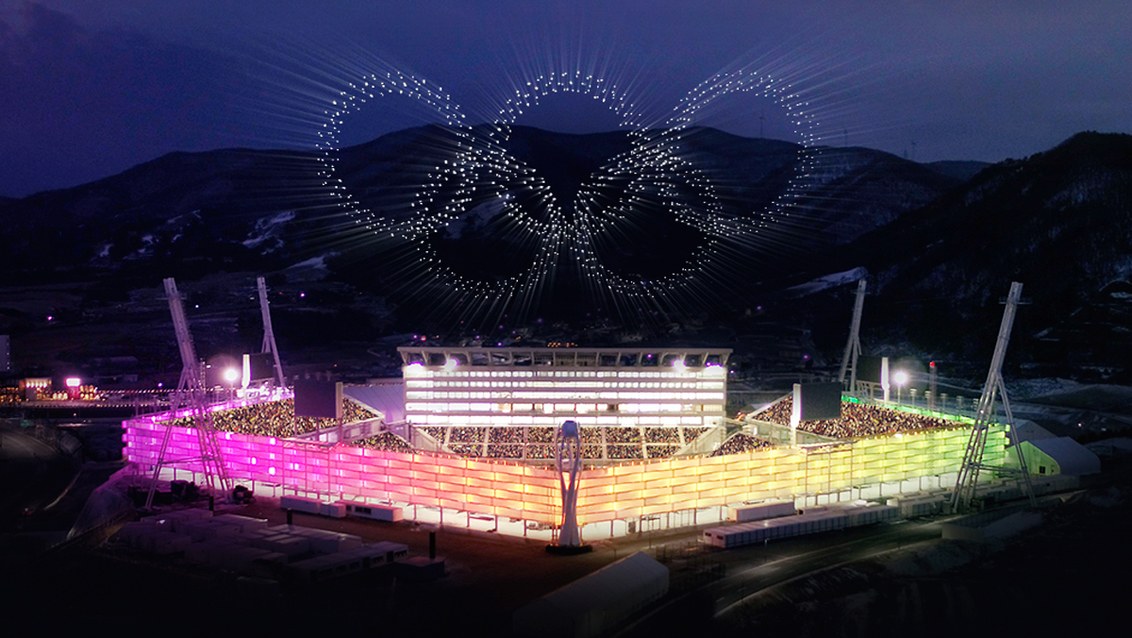1,218 is the number of unmanned aerial vehicles (henceforth “drones”) reported to have flown “in synchronization” at the PyeongChang 2018 Olympic Winter Games. To a novice researcher whose current interests lie in drones, the record-breaking showcase was nothing less than spectacular — enthralling, even. The dramatic advancement of the technology that used to maneuver only 100 drones — not that that’s easy peasy — now orchestrating over 1,000 really is almost a wonder. At times, I even felt a remote, somewhat misplaced, sense of pride in knowing that fellow engineers elsewhere are making progress on what I’ve just begun. However, with my own progress over the last couple of years, what is and what isn’t wonder became increasingly more apparent. The Olympics opening ceremony on February 9, which included the showing of the pre-recorded 1,218-drone spectacle, was an opportune venue for me as an engineer-turned-newswriter to practice telling apart engineers’ efforts from media decor.

The struggle of how to sell stories is real to the point that reporters sometimes go overboard in decorating actual technology with sellable “technology”, sometimes even without realizing it. It’s high time to get very technical and debunk some of the misreported technicalities that portray engineering achievements as misleadingly greater than they per se already are.
Let’s begin with the Wired article “Winter Olympics 2018: Inside the Opening Ceremonies Drone Show”, which seems to have suffered least from the dilution of technical consistency. Even so, the article misses out on some technical subtleties in the very description of what the drone show actually was: a “mechanical murmuration” at first but then “[...] each drone operates independently, communicating with a central computer rather than any of the drones around it [...]” later in the same article. It doesn’t take an Intel employee to notice that a real-life murmuration — think a school of fish or a flock of birds — is exactly what the Intel drone show was not. There isn’t an overseeing “godlike” entity planning the trajectories of each, say, bird and commanding every bird at each point in time. Not surprisingly, there indeed exists a separate class of engineering problems named “formation control”, which, when implemented in a distributed manner — i.e., “each drone communicates with the drones around it, rather than with a central computer” — does qualify as a “mechanical murmuration”. In fact, distributed formation control problems are known to be notoriously challenging to the point that even the simplest of formations, such as a line, a circle, a cross, or a triangle, have been studied extensively, with field-test results depicting less than a dozen drones with today’s state of the art.
Consider now “Intel’s Winter Olympics light show featured a record-breaking 1,218 drones”, which is the only article from The Verge covering the said drone show. This coverage, however, is mediocre at best, as all it does is quote a Wired report in its attempt to “explain” what was going on at the Intel drone show. The Verge’s ambition to cultivate its specialty in technology and “examine how technology will change life in the future for a massive mainstream audience” is single-handedly forsaken, as quoting a Wired report is exactly what the more generic news reports, e.g., “Watch 1,218 drones form the Olympic rings during Opening Ceremony” from USA Today, would do effortlessly, without the need for the “Oh, we specialize in technology” mission.
Other generic news reports do no better; TIME’s “Thousands of Intel Drones Lit Up the Opening Ceremony With the Olympic Rings. What Does the Symbol Mean?” quotes The Verge — which, in turn, quotes Wired — and looks more like it wants to withdraw from the liabilities of technical reporting by avoiding the technical elaboration in the first place: a somewhat “laid-back” approach to reporting in choosing to relay others’ reports and refusing to assert direct comments.
Last in line is Recode, a Verge affiliate whose only coverage on the drone show is titled “Intel’s drone light show never got off the ground for the 2018 Winter Olympics opening ceremony”. It mysteriously decides to discard all the technicalities altogether and focus only on the fact that the drone show was not performed live. Instead, there is a three-minute Intel-made video of the behind-the-scenes, which I frankly believe puts Recode’s name to shame with its crew consisting of “the most informed and respected journalists in technology and media”.
Would it be better off with engineers and scientists writing and publishing the news themselves or with newswriters spending more time on journal papers and conference proceedings than on producing the article itself? I honestly have no answer, but this year’s Olympics Opening Ceremony and the subsequent news reports reminded me of one thing very clearly on the divide between lab people and laypeople: we all ought to communicate better and avoid compartmentalizing people into their roles.

